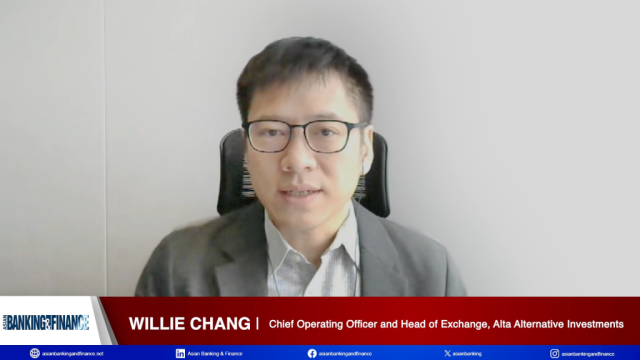
Tighter rules targeting shadow banking put brakes on China banks' expansion
The country’s slowing economy is about to squeeze banks’ profits and drive even greater costs.
Mainland China’s debt has ballooned to almost thrice the size of its economy, sending policymakers in a frenzied rush to rein in systemic risks in the country’s financial system. Analysts predict that this will slow down mainland asset growth to 7% in 2018, compared to 8.4% in the previous year, with joint-stock as well as city and rural institutions taking direct hits. Smaller banks will be restrained from accessing cheaper funding, thereby reducing their ability to undertake risky investments considered as shadow loans.
Regulators have been adamant in proposing various risk-mitigating measures, including a cap on bank shareholdings and limits on the issuance of negotiable certificates of deposit (NCD) in the area of shadow banking. Chua Han Teng, head of Asia Country Risk, BMI Research, said that the increased oversight on the opaque shadow banking sector is the first of many trends characteristic of an ongoing moderation in China.
Teng said that despite slowing economic growth, Chinese banks are stepping up to better manage their loan books and credit risks, even as they benefit from the government’s debt-to-equity swap programme. This means that the non-performing loans (NPL) ratio of the Chinese commercial banking system will most likely remain stable in 2018.
Regulatory ruckus
The beginning of 2018 has seen increased announcements from the China Banking Regulatory Commission (CBRC) regarding new measures targeting shadow banking. Alicia Garcia Herrero, chief economist for Asia-Pacific at Natixis, said that measures range from further imposing a liquidity mismatch ratio to putting a lid on the issuance of NCDs, which are short-term uncollateralised papers. She noted the new restriction on the issuance quota will put brakes on additional expansion beyond the interbank liabilities requirement in the Macro Prudential Assessment (MPA).
A fall in key capital ratios is evidence that Chinese banks are not generating organic capital, with deterioration in both liquidity and profitability putting further pressure on solvency. Garcia Herrero said that pressure has also been stemming from Basel III capital surcharge requirements and that demand will not stop there, but increase as the CBRC imposes Total Loss Absorbing Capacity (TLAC) requirements.
“Although the expansion in total assets has now slowed down, this is likely to create pressure on banks to restructure their funding sources in terms of maturity and instruments. This will have higher impacts on small and medium-sized banks, which tend to have a less stable deposit base and higher reliance on short-term instruments. With tightened monetary condition and increasing counterparty risk, the trend of climbing funding costs is unlikely to be reverted,” Garcia Herrero added.
The People’s Bank of China (PBoC) also recently published new rules encouraging creative design on capital replenishment bonds. Garcia Herrero said that additional clauses are allowed based on various solvency ratios, as potential losses can be absorbed through equity swaps. She added that this will pave the way for solvency and TLAC requirements in the future, in contrast to convertible bonds, which focus on share prices. In fact, Chinese banks have started to find ways to raise capital in the bond market, especially through the issuance of Tier 2 bonds and convertible bonds.
“In the past few years, the majority of the attention has been placed on the asset quality of Chinese banks. The non-performing loan ratio has been surging until recently. In fact, a more stable macroeconomic environment and higher producer prices have helped some of the zombie firms to improve their conditions. Together with the grand cleanup through debt-to-equity swaps, asset quality in 2018 seems to be lesser of a problem through sharing the financial risks with the rest of the economy,” Garcia Herrero said.
BMI Research reported that asset quality has been improving amidst a rise in corporate profitability and economic activity. Furthermore, the establishment of the Financial Stability and Development Committee and the implementation of the debt-to-equity swap have resulted in improvements to the country’s macro-prudential framework. As a result, Chinese banks are expected to manage their NPLs well in the coming year.
Practical matters
Over the years, Chinese consumers and clients have become increasingly connected to their banks through digital platforms, thereby resulting in the exponential growth of China’s online lenders. Nicolas Zhu, senior analyst, Moody’s Investors’ Service, said that the PBoC has licensed Baihang Credit Bureau Co., as a credit information business through which banks and structured finance sponsors can improve the quality of their consumer loan portfolio with more refined underwriting, structuring, and monitoring.
“Baihang will complement the government’s existing consumer credit database of banking transactions by using big data digital technology to process behaviour data of activities such as mobile phone usage, travel and location reference, and shopping events. The complementary value of the non-bank behaviour data will allow banks to make more informed loan decisions for consumers that lack a credit history, such as the 171.9 million migrant rural workers in China,” Zhu said.
Furthermore, Zhu suggested cross-referencing various sources of information to improve traditional credit scoring based on static demographic and banking information. According to him, this would enable early detection of overleveraged consumers across bank and non-bank borrowing, thus deterring unscrupulous or overextended borrowers. According to him, this would also help address the risk of China’s rapidly rising household leverage since 2015.
As tech companies continue to pose a serious threat to the traditional banking industry, Sangiita Yoong, analyst, East and Partners, said that Chinese banks have started direct banking services and improved mobile banking to combine wealth management, consumption, and entertainment. This is in response to companies such as Yuebao that have increased the bargaining power of investors and banks to pay a higher cost for the same funding at a wholesale price, even though most of the funding could be eventually channeled back to banks.
Finally, Yoong said that Chinese banks, despite being competitive on the price front, have very poor levels of customer service. Customers of Chinese banks have complained about slower response times, lower quality trade documents, and poor processing accuracy, amongst others. She said that there is a lack of trade account officers who fully understand the needs of their clients and, at the same time, possess in-depth business and industry knowledge.
Belt and Road business
Yoong said that the Belt and Road Initiative could deepen the cooperation of Chinese banks with regional banks, as they follow their clients abroad, acquire assets, set up new branches, and even enter new lines of business. Yoong added that an obvious area of positioning opportunity is to offer advisory services in relation to BRIrelated investments, projects, and solutions, alongside updates on BRI development.
“Our recent projection suggests that the bulk of finance business is expected to flow to Chinese state-owned commercial banks supported by domestic agencies and governmental ministries,” Yoong said. “The banks’ success in reaping the full benefits of BRI will hinge on how they navigate issues relating to tax, credit analysis, financial planning, and particularly compliance as it concerns infrastructure projects such as rails and oil pipelines that may flow through sanctioned regions.”
Garcia Herrero added that the massive BRI initiative could in fact provide more lending opportunities for banks, as overseas loans have already made up more than 7% of total loans. She said that the share is even higher for state-owned commercial banks, whose shares exceed 11%. She cautioned that this comes with risks, as the majority of BRI-related investments are in relatively less developed and riskier economies in the region.























 Advertise
Advertise







